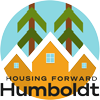Glossary
Glossary
Resources
Feeling confused by all the jargon? Our glossary will help explain some of the common terminology you’ll hear when working on your ADU project.
Important ADU Vocabulary
Alternative Owner-Builder (AOB) Program: An alternative to the traditional permitting process for homeowners outside of service areas. The program allows greater flexibility with building materials and process, has fewer requirements and inspections, takes less time and costs less. However, homeowners must occupy the primary home and take responsibility for any structural or fire safety issues. Homeowners have the option to use a contractor, but it is not required. For more information consult this packet developed by county staff.
Building code: Standards that ensure buildings are built safely. Building codes are made up of various sections (plumbing, electrical, etc.). These are established by the State of California and are often amended by cities.
Community Service District A district that provides a community service such as fire protection, water, or sewer. The governing board of these districts are allowed to levy additional fees and taxes in order to provide their stated services.
Deed restrictions: Conditions or rules that are added to a deed for a house. For example, state law now requires homeowners building a JADU to specify that they will live in the main house while renting their JADU or that they will live in the JADU while renting the main house and that both will not be rented at the same time.
Floor area ratio (FAR): FAR is the number of built square feet divided by the size of a lot. FAR includes built area on all floors. The zoning code will specify the maximum FAR for your property if this applies.
Lot coverage: The area of a property that is allowed to have buildings on it in relation to the total lot area, generally expressed as a percentage. Zoning code will specify the maximum lot coverage for your lot.
Ministerial review: Review by the city that allows a homeowner to build an ADU as long as it meets all set requirements. There is no discretion or judgment involved on the reviewer’s part and no public hearings needed.
Open space requirements: Rules that require a certain amount of yard area to be suitable for active or passive recreation (e.g., kids playing ball or a family having dinner). This requirement is identified in the zoning code.
Setbacks: The minimum distance a building must be located from front, side, or back property lines. A five-foot side setback means any building must be at least five feet from the side property line. State law requires a four-foot side or rear setback for new construction that is 800 square feet or less, and no setbacks for conversions.
Single-family/multi-family: Single-family zoning refers to one home on a property. Multi-family zoning refers to more than one home located on a property (e.g., apartments).
Special Permit: Permission to build an ADU or take other action that requires additional staff review and a public hearing. Generally, ADUs do not need Special Permit and require only a ministerial review.
Zoning/zoning code: City/county standards that determine what can be built on a site. All lots in the city will be assigned a zone (e.g., R-1, a typical single-family zone), and each zone has different regulations. The zoning code governs many aspects of development, including how tall buildings can be, where buildings can be located on a lot, etc. Most jurisdictions only allow second units in certain zoning areas.
Design Definitions
Architect: A design professional who has passed a licensing exam by the state. Architects are trained in design and construction management. We use the term architect and designer interchangeably in this book.
Design/build: A firm that does both design and construction.
Designer: A general term for someone who does design. Architects are one type of designer. Designers who are not architects often charge lower rates but have less expertise.
Drafter: Someone who does architectural drawings.
Elevation drawing: A drawing that shows a straight view, usually of an exterior wall. Elevation is often a synonym for facade, so the south elevation is the south-facing facade of your house.
Prefab/panelized/modular: A method of building that involves some or most of the construction happening off-site.
Site plan: A drawing of your lot, buildings, and other features.
Survey: A professional examination/drawing of your property boundaries and/or slope. This is required in some cases but not in others.

